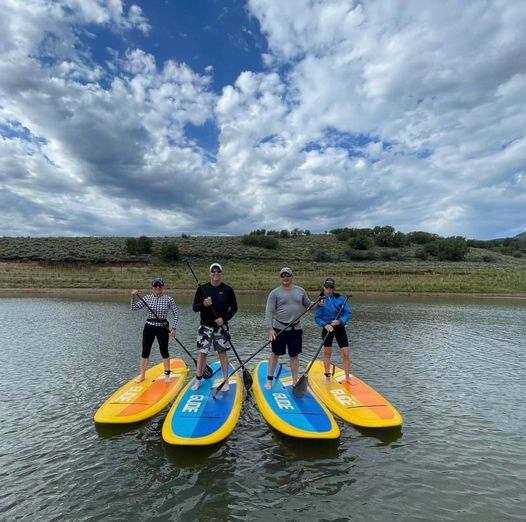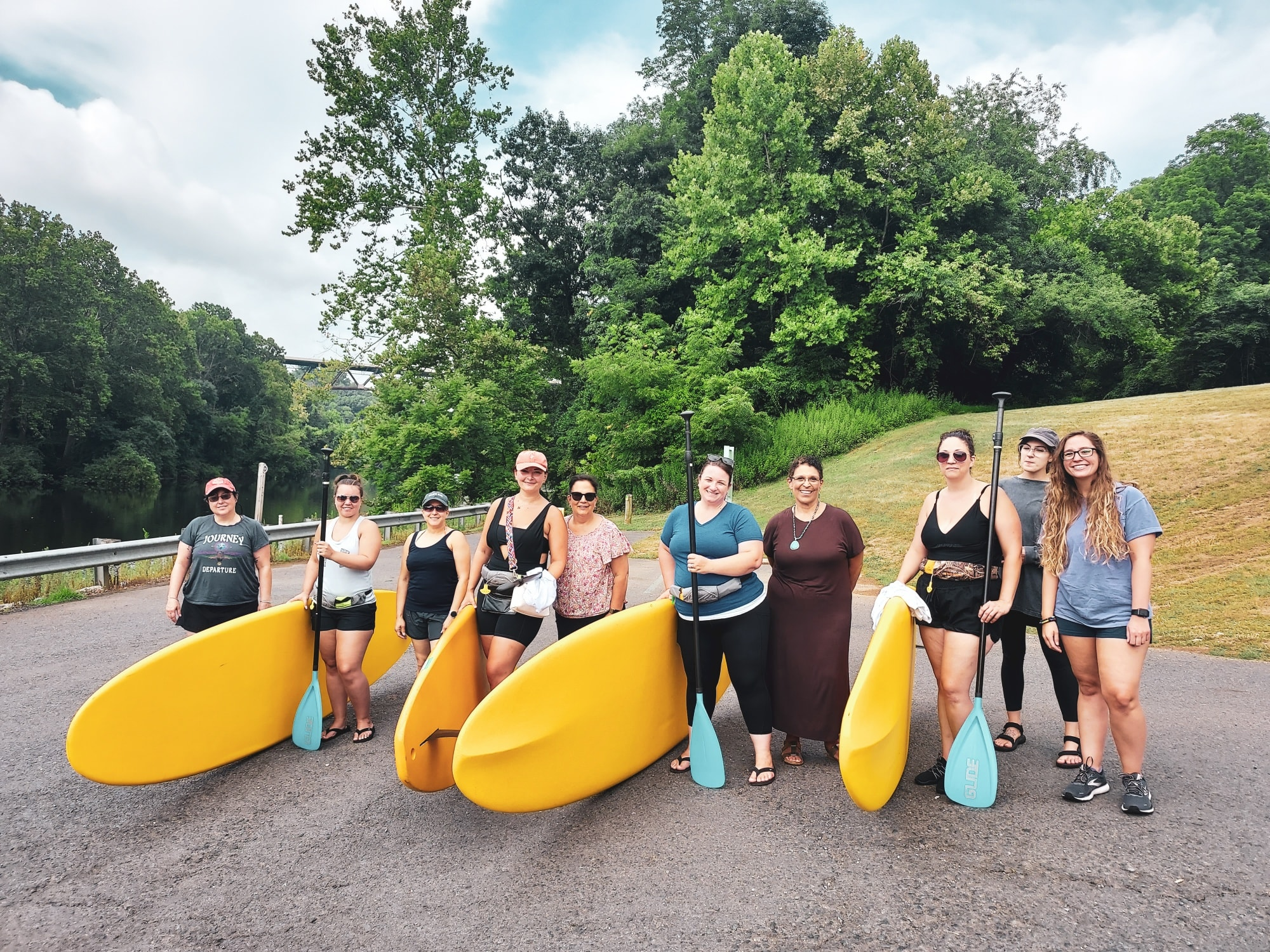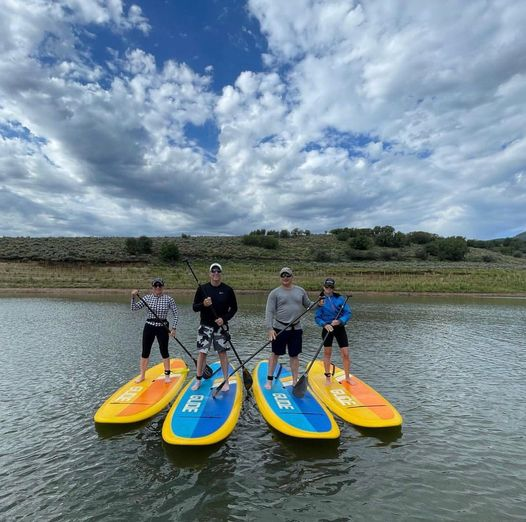
Paddle Board Etiquette for Newbies
Paddle boarding stands out as an exhilarating way to immerse yourself in the beauty of the outdoors, offering a mix of adventure and tranquility as you explore diverse waterways. For those new to stand-up paddle boarding (SUP), grasping the nuances of water etiquette is paramount. This ensures not only your safety but also an enjoyable experience for everyone on the water.
Key Highlights
- Selecting the Right Paddle Board: Factors to consider for both inflatable and solid boards to suit your paddling style and conditions.
- Familiarizing Yourself with Gear: Importance of knowing your board, paddle, and essential accessories for an optimized SUP experience.
- Respecting Other Water Users: Guidelines for sharing waterways respectfully with fellow paddlers, swimmers, and marine life.
- Environmental Responsibility: Tips for minimizing your impact and preserving the natural beauty of paddle boarding locations.
- Prioritizing Safety: Essential safety practices, including weather checks, wearing a PFD, and understanding local hazards.
- Skill Development: Resources for beginners to improve balance, paddling techniques, and overall SUP skills.
- Embracing Mindfulness and Relaxation: Integrating mindfulness into paddle boarding for a holistic experience.
- Maintenance and Care: Regular maintenance tips to extend the lifespan of your paddle board and gear.
- Expanding Your Paddle Boarding Horizons: Exploring new activities and challenges as your skills advance.
Paddle boarding is a fantastic way to enjoy the great outdoors, providing a fun and often relaxing way to explore waterways. However, for first-time paddlers, it's essential to understand the correct etiquette when out on the water. This not only ensures your safety but also that of other paddlers around you.

Choosing the Right Paddle Board
Before you hit the water, it's crucial to pick the right paddle board for your skill level and the conditions. Whether you opt for an inflatable paddle board or a solid board will depend on various factors, including transportation and storage. Inflatable paddle boards are lightweight and easy to transport, thanks to accessories like a storage backpack. They also come with a manual pump for easy inflation and a repair kit for any unforeseen damage. Solid boards, on the other hand, often offer better performance and stability for long-distance expeditions or stand-up paddleboarding races.
Check out this guide to understand the difference between hard and inflatable stand-up paddle boards.
Know Your Gear
Being familiar with your paddle board and other SUP accessories is crucial. Understand the weight capacity of your board and ensure it can support you and any other accessories you might carry. The traction pad, adjustable paddle, and removable fins are all crucial components of the board that contribute to its stability and your overall performance. Some boards also come with a camera mount for capturing your paddle boarding adventure.
A waterproof storage bag for keeping your belongings dry, a kayak seat for those who prefer sitting, and bungee cords for securing your gear can all add to your paddle boarding experience. It's also essential to always have a safety leash attached to your ankle or calf.
Respect Other Water Users
When paddle boarding, especially in crowded areas, it's vital to respect other water users. This means maintaining a safe distance from other paddle boarders, surfers, swimmers, and boaters. Always keep in mind the "Right of Way" rules to avoid collisions. Also, if you're planning to go fishing on your stand up paddleboard, ensure you're doing so in permitted areas.
Take a look at this blog post for tips on paddle boarding with your pets in a respectful and safe manner.
Environmental Responsibility

Paddle boarding brings you close to nature, and as a paddle boarder, you have a responsibility to protect the environment. Avoid disturbing wildlife and remember that certain areas might be protected habitats. Always carry out what you carry in to leave no trace behind.
Consider reading this article on responsibly exploring marine habitats while paddle boarding.
Safety First
Always put safety first. This means checking the weather and water conditions before heading out, wearing a personal flotation device (PFD), and letting someone know where you're going. Make sure you are aware of any potential hazards in the area, such as strong currents, tides, or underwater rocks.
Develop Your Skills
As a newbie, you'll need to spend some time mastering the basics of stand-up paddle boarding, such as balancing, paddling, and steering. Start by practising on calm waters before trying out more challenging conditions. You might also want to consider taking a paddle boarding lesson or course to improve your skills.
This post gives you tips for improving your paddle stroke on a stand-up paddle board.
Mindfulness and Relaxation
One of the benefits of paddle boarding is that it can be a relaxing and mindful experience. As you paddle and glide across the water, take time to appreciate the natural surroundings. Whether you're paddling on a serene lake, an urban waterway, or along a coastline, paddle boarding offers a unique way to connect with nature.
For those who are interested in incorporating mindfulness into their paddle boarding experience, check out this blog post about exploring meditation on a paddle board.
Broaden Your Horizons

Paddle boarding isn't just for calm lakes and rivers; you can take your paddle board on global adventures or use it for different activities. For example, SUP Yoga and Pilates are becoming increasingly popular, or you might use your paddle board for fishing or even as a platform for scientific research and environmental monitoring.
From paddle boarding retreats to urban paddle boarding, there are endless ways to enjoy this sport. Check out these blog posts about the world of SUP Pilates and urban paddle boarding.
As you become more experienced, you can also take on new challenges, such as paddle board races or tackling rapids, or even try night-time paddle boarding. Remember, no matter what adventures you choose, safety should always be your priority.

